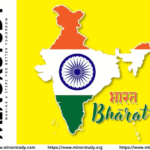🧬 Introduction: A Day of Hope, Science, and Humanity
Every year on May 18, the world observes World AIDS Vaccine Day—not just to raise awareness, but to inspire global unity, scientific research, and unwavering hope in the fight against one of humanity’s deadliest diseases: HIV/AIDS.
- 📜 History of World AIDS Vaccine Day
- 📅 Timeline of Major Milestones
- 📊 7 Powerful Facts About HIV, AIDS, and Vaccines
- ❓ FAQs: Understanding the Importance
- ❓ What is the aim of World AIDS Vaccine Day?
- ❓ Is there a vaccine for HIV available in 2025?
- ❓ Why is May 18 chosen?
- ❓ Who observes this day?
- 🧭 Significance of World AIDS Vaccine Day
- 🔬 1. Scientific Mobilization
- 🫱🏽🫲🏿 2. Global Solidarity
- 🌍 3. Awareness & Prevention
- 🧠 4. Fighting Stigma
- 🌎 Global Observance Activities
- 🔹 Educational Workshops
- 🔹 Candlelight Vigils
- 🔹 Fundraisers & Charity Runs
- 🔹 Free HIV Testing Drives
- 🔹 Social Media Campaigns
- 💌 Wishing Messages to Share on World AIDS Vaccine Day
- 📌 Why This Day Matters in Our Daily Lives
- ✅ Summary: Key Takeaways
- 🏁 Conclusion: Hope Is the Strongest Vaccine of All
Even though an effective AIDS vaccine is still in development, this day symbolizes the collective human will to conquer the virus and secure a future free from AIDS.
Let’s explore the emotional, scientific, and social essence of this powerful global observance.
📜 History of World AIDS Vaccine Day
World AIDS Vaccine Day, also known as HIV Vaccine Awareness Day, was first commemorated on May 18, 1998.
It was inspired by a historic speech by U.S. President Bill Clinton on May 18, 1997, where he emphasized the urgent need for a vaccine to stop the spread of AIDS. He said:
“Only a truly effective, preventive HIV vaccine can limit and eventually eliminate the threat of AIDS.”
Since then, scientists, healthcare professionals, educators, and advocates have come together every year to honor this call—to push boundaries, break stigmas, and bring hope to millions.
📅 Timeline of Major Milestones
| Year | Event |
|---|---|
| 1981 | First recognized cases of AIDS in the United States |
| 1983 | Discovery of HIV as the virus causing AIDS |
| 1996 | First combination antiretroviral therapy (ART) introduced |
| 1997 | President Clinton’s speech sparks the global AIDS vaccine initiative |
| 1998 | First World AIDS Vaccine Day observed |
| 2009 | RV144 HIV vaccine trial in Thailand shows modest effectiveness (31%) |
| 2022 | mRNA HIV vaccine trials begin, inspired by COVID-19 vaccine success |
| 2025 | Global collaborations continue for universal access to prevention and care |
📊 7 Powerful Facts About HIV, AIDS, and Vaccines
🌍 Over 39 million people globally are living with HIV as of 2025.
💉 There is still no fully approved vaccine, but several trials are in advanced stages.
🧪 Modern vaccine technologies like mRNA are offering new hope.
🧠 AIDS Vaccine Day also educates people about HIV prevention methods, including safe sex, PrEP, and testing.
🫂 The event honors scientists and health workers committed to ending the HIV epidemic.
❤️ AIDS-related deaths have dropped by over 60% since the early 2000s due to awareness and ART.
🕊️ More than a day of science, it’s a day of solidarity with those living with or affected by HIV/AIDS.
❓ FAQs: Understanding the Importance
❓ What is the aim of World AIDS Vaccine Day?
To promote awareness about the need for a safe and effective HIV vaccine and to support the efforts of researchers and organizations working toward it.
❓ Is there a vaccine for HIV available in 2025?
As of now, no fully approved vaccine exists, but multiple candidates are in clinical trials, some showing promising results.
❓ Why is May 18 chosen?
It marks the anniversary of President Clinton’s speech in 1997, advocating global commitment to HIV vaccine development.
❓ Who observes this day?
It’s commemorated globally by:
Scientists
NGOs
Governments
Health professionals
Communities affected by HIV/AIDS
🧭 Significance of World AIDS Vaccine Day
🔬 1. Scientific Mobilization
This day recharges the scientific community to continue pursuing solutions through innovation and resilience.
🫱🏽🫲🏿 2. Global Solidarity
It promotes inclusiveness and empathy, especially toward vulnerable populations, including LGBTQ+, sex workers, and people with substance use history.
🌍 3. Awareness & Prevention
It’s a moment to re-educate the public about preventive tools like condoms, clean syringes, PrEP (Pre-exposure prophylaxis), and early testing.
🧠 4. Fighting Stigma
The day plays a crucial role in dismantling social stigma and misinformation surrounding HIV/AIDS, especially in conservative regions.
🌎 Global Observance Activities
🔹 Educational Workshops
Health centers and schools organize interactive sessions on HIV transmission, myths, and prevention.
🔹 Candlelight Vigils
Communities hold vigils in memory of those lost to AIDS and to inspire hope for those still fighting.
🔹 Fundraisers & Charity Runs
Nonprofits and health organizations host events to raise funds for vaccine research and patient support.
🔹 Free HIV Testing Drives
Hospitals and clinics offer free or subsidized testing, encouraging early diagnosis and treatment.
🔹 Social Media Campaigns
Hashtags like #AIDSVaccineDay and #EndAIDS2030 trend to spread messages and survivor stories.
💌 Wishing Messages to Share on World AIDS Vaccine Day
“🧬 On World AIDS Vaccine Day, we stand in solidarity—with science, with love, and with hope.”
“🌍 Every step in vaccine development is a step closer to a world free from HIV. Let’s keep walking together.”
“❤️ May 18 is not just a day on the calendar, but a call to believe in the power of progress and human compassion.”
“💉 To all scientists, health workers, and advocates—you are the real-life superheroes. Thank you.”
“🕯️ Let’s remember those we’ve lost, support those who fight, and believe in a future without AIDS.”
📌 Why This Day Matters in Our Daily Lives
You may not be infected with HIV, but that doesn’t mean it isn’t your fight. Here’s how World AIDS Vaccine Day impacts everyday lives:
🔹 Health Security
Vaccine development strengthens public health infrastructure that benefits society as a whole.
🔹 Empathy & Education
By learning and sharing facts about HIV/AIDS, you become a beacon of truth in a world clouded by fear and misinformation.
🔹 Future Readiness
Lessons learned from HIV vaccine research also influence other breakthroughs—COVID-19 vaccine progress was accelerated thanks to HIV work.
🔹 A Wake-Up Call
It reminds us of the importance of sexual health, testing, and non-judgmental health care access for all.
✅ Summary: Key Takeaways
📅 Observed every May 18
🧬 Honors scientific commitment to an HIV vaccine
🧠 Fights stigma, promotes testing and education
🌍 Observed globally with workshops, campaigns, and tributes
❤️ Encourages hope, remembrance, and action
🚀 Represents a collective goal: end AIDS as a public health threat
🏁 Conclusion: Hope Is the Strongest Vaccine of All
World AIDS Vaccine Day is more than a medical observance. It’s a symbol of hope against odds, unity in crisis, and determination for justice.
As we advance toward a potential cure or vaccine, it’s crucial that we keep raising awareness, funding research, and supporting those who continue to battle this illness every day.
Because when the vaccine comes—and it will—it won’t just be a scientific breakthrough. It will be a triumph of humanity.
Let’s keep walking toward that future.
Together, we can end AIDS. One breakthrough. One voice. One day at a time.








